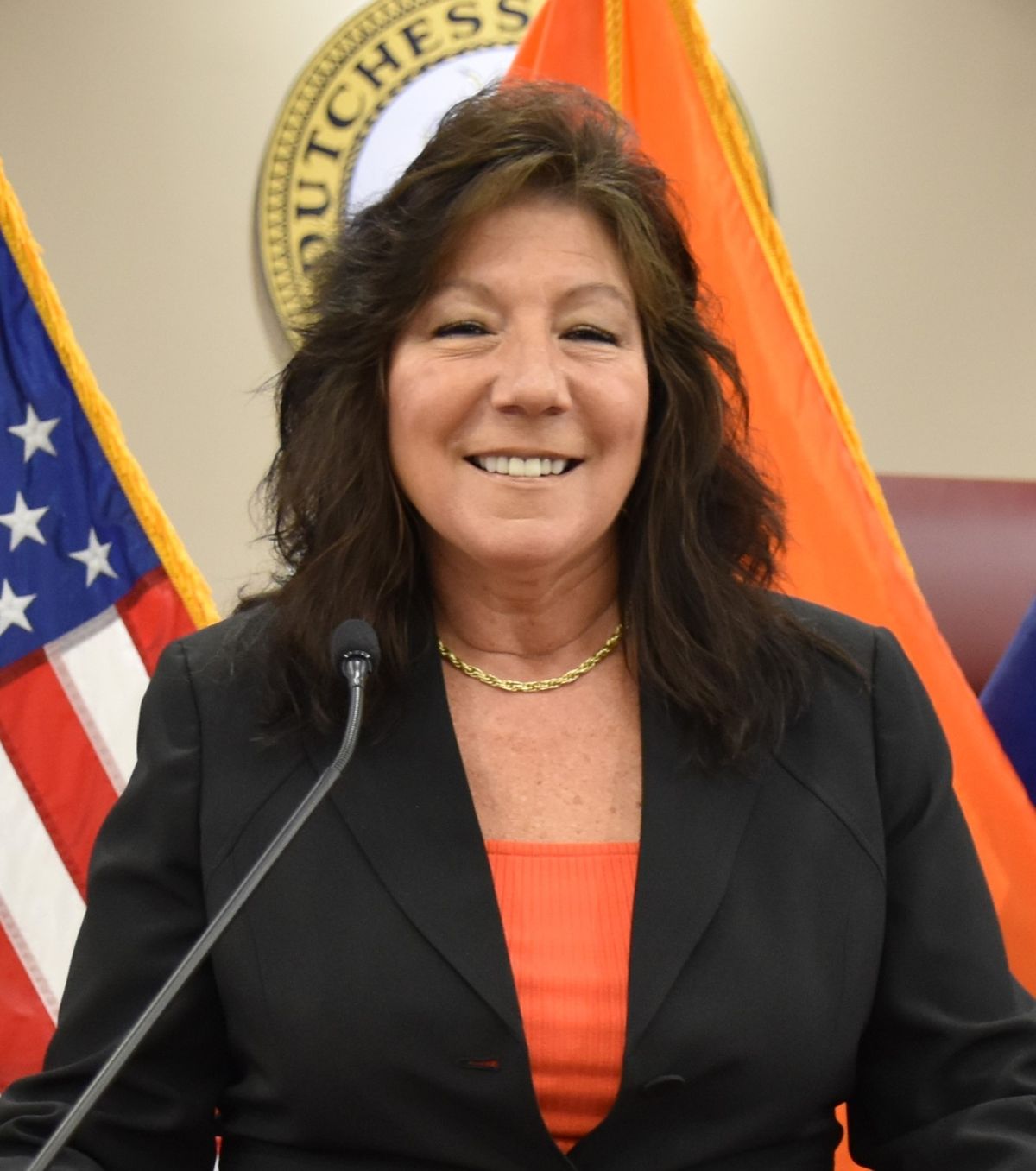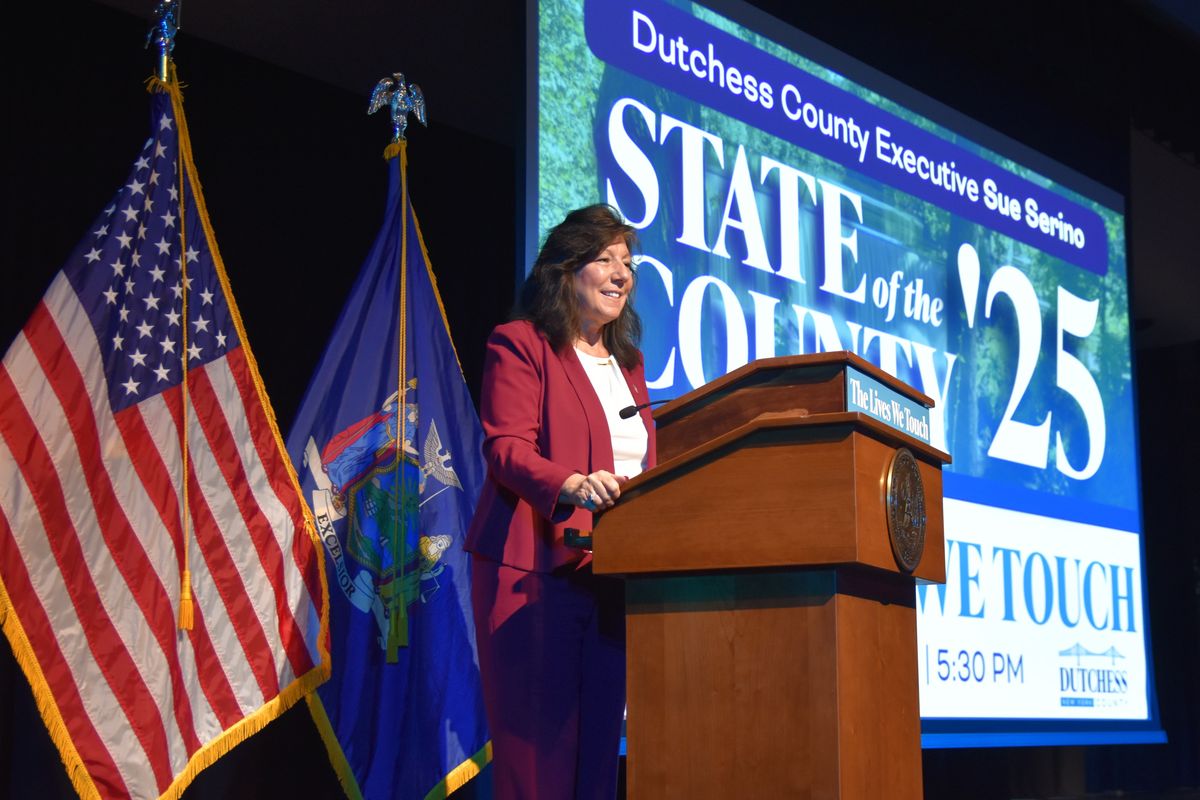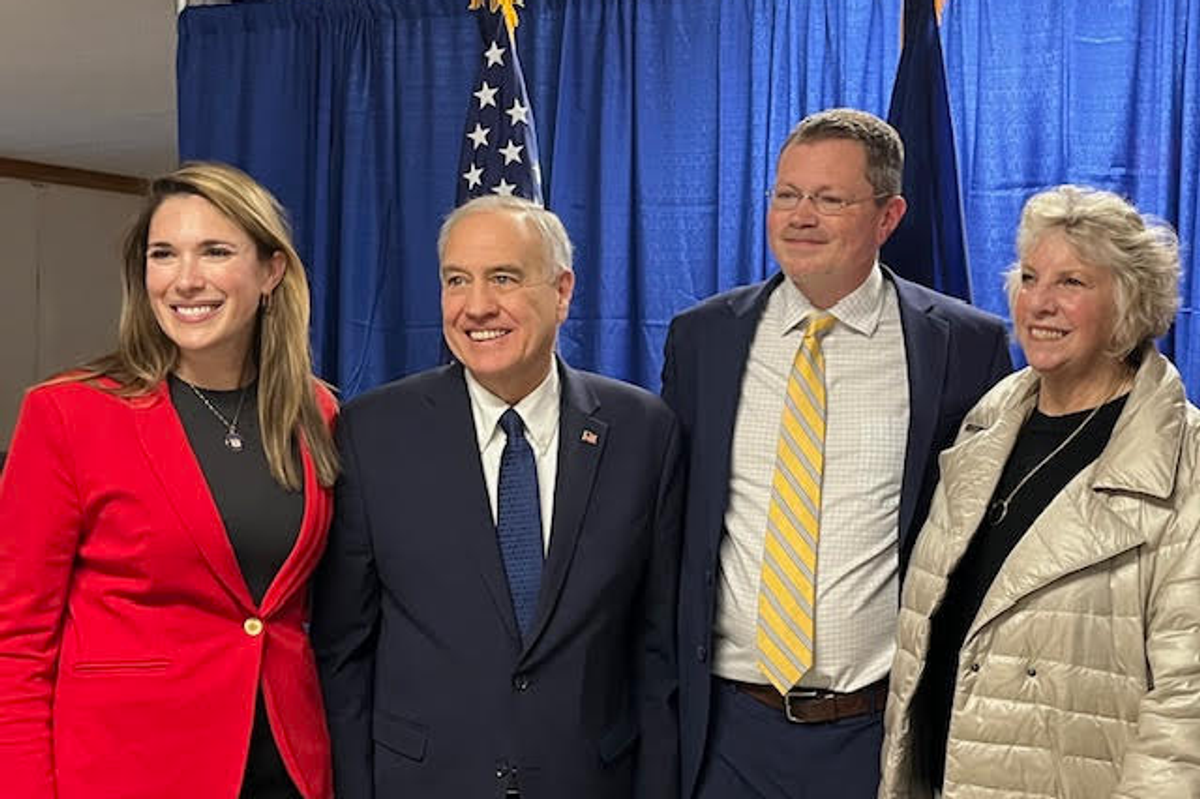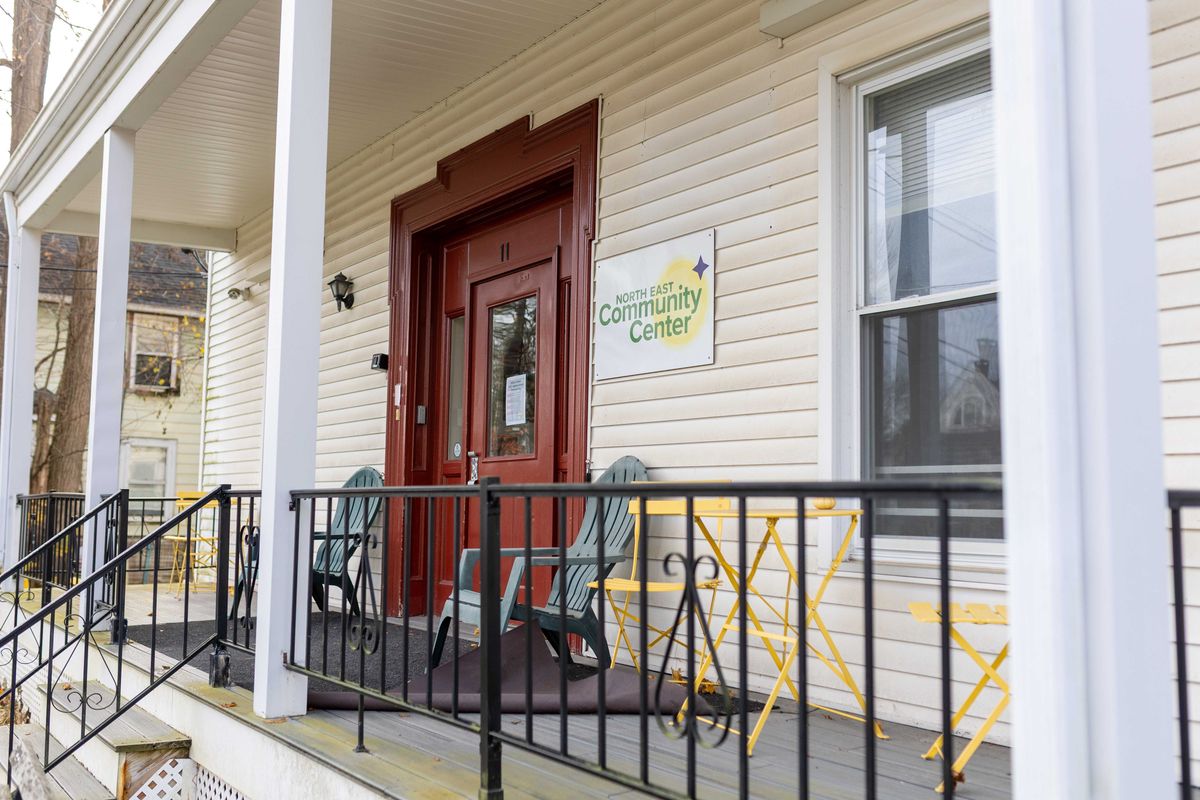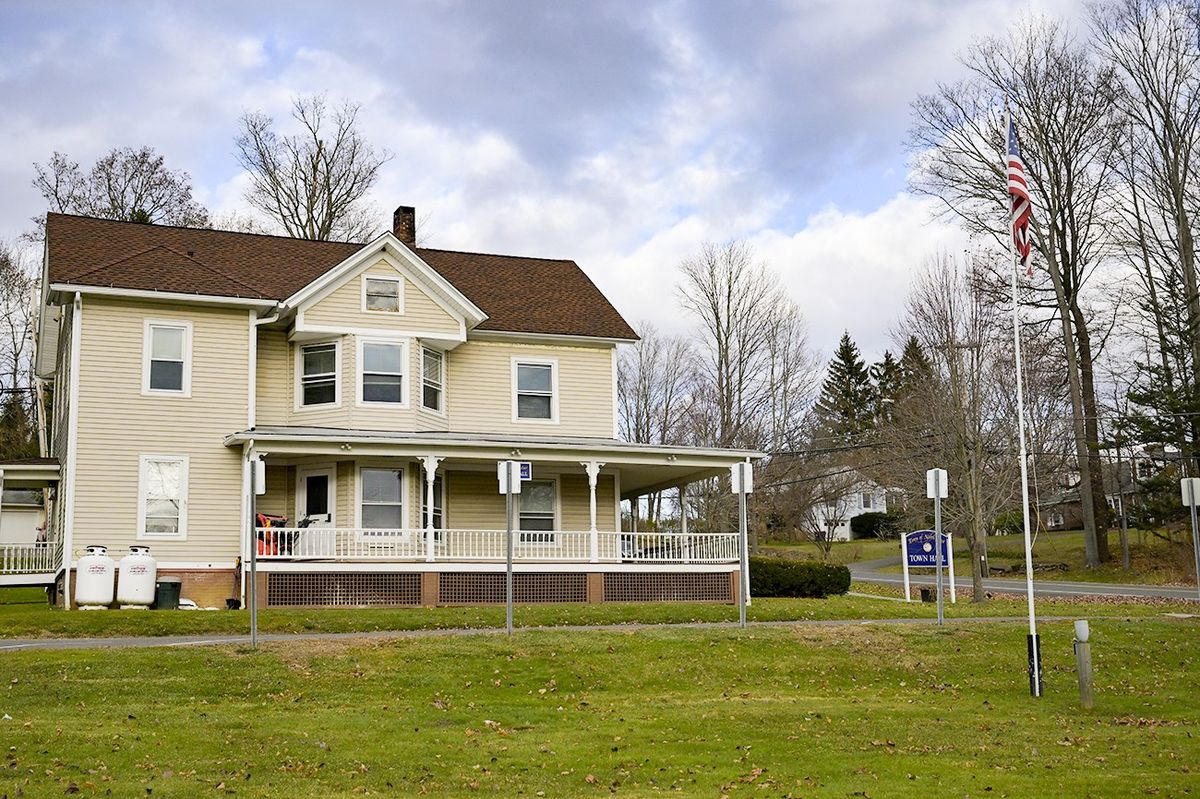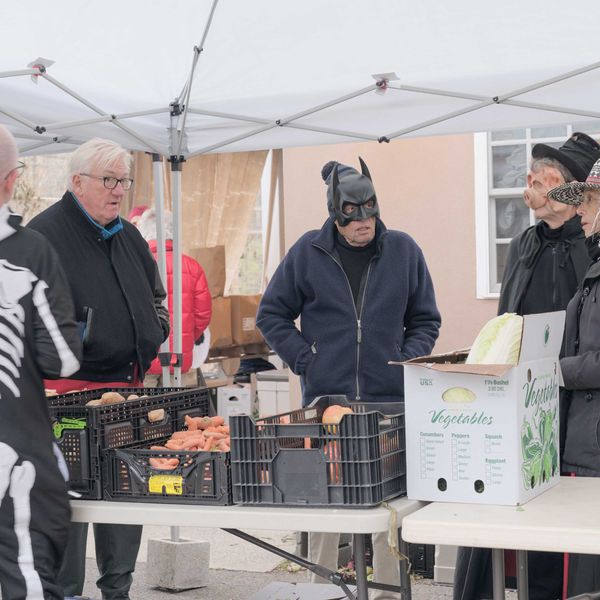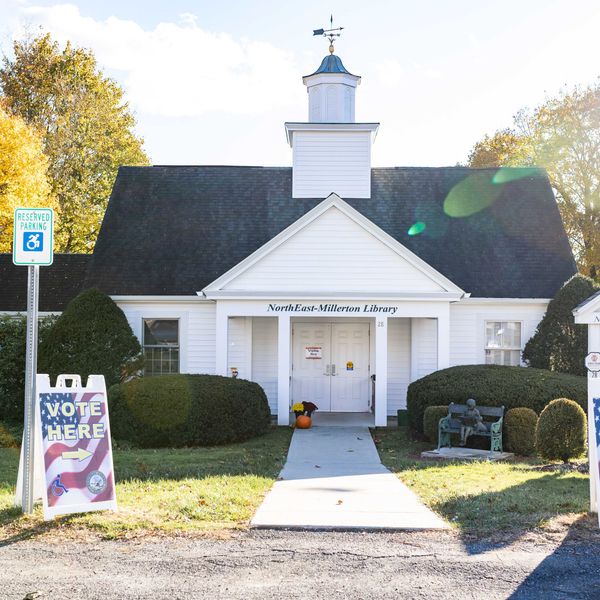Latest News
The North East Community Center's Early Learning Program will close its doors on Dec. 19, NECC's Executive Director Christine Sergent said in an interview with The News on Monday, Nov. 10. Leaders of the nonprofit said increased costs across every program led to a difficult decision to shutter the daycare until further notice.
Photo by Aly Morrissey
MILLERTON – The North East Community Center announced Friday that it is suspending its Early Learning Program, citing mounting financial challenges in running a daycare — a decision that came suddenly for both parents and staff.
Families learned of the decision in an email from NECC’s Executive Director Christine Sergent, which was also posted to the NECC website. Staff members were notified on Thursday and Friday. The news came as a shock to all.
Sergent said the burdens of running a childcare center had become unsustainable. “Like many childcare programs, we were facing ongoing challenges, but we kept fighting to keep it open,” she said. “We felt it was worth it and wanted to make it work.”
NECC Board Chair Irene Banning said the decision came after months of difficult deliberation. “With rising costs across the board, the loss of public funding for other programs, and anticipated increases in healthcare premiums – it became impossible to continue running this program. And it broke our hearts,” she said.
Banning noted that establishing a childcare program had long been one of NECC’s goals. “People worked incredibly hard to make it happen,” she said. “But the economics of childcare are, I think, insurmountable – even for a nonprofit.”
Many parents said they understood the financial realities but were frustrated by the way the closure was communicated, describing it as abrupt and lacking transparency.
Finegan Ferreboeuf, a resident of Ancram whose child has been enrolled in the toddler room since May, said the decision could have been handled more thoughtfully and done less harm to families, staff and children.
“I think all of the families involved understand that the early childcare landscape is incredibly difficult, and people are aware that there is a loss of funding at NECC,” Ferreboeuf said. “Where we feel disappointed is that we weren’t allowed to be involved in any of this. There was a real lack of communication with the community and the stakeholders.”
Timeline and financial pressures
Sergent and Banning said a combination of factors led to the difficult decision.
When Dutchess County stopped accepting new applications for childcare subsidies in early September — citing high demand and limited funding — the ELP was already facing declining enrollment as many preschoolers transitioned to universal public pre-K programs.
The resulting loss of tuition and subsidy revenue created a severe financial strain, prompting a series of emergency board meetings to evaluate the situation and explore potential solutions.
“The board spent several weeks analyzing a variety of strategies to avoid closure,” Sergent said. “But by the end of October, it became clear that we couldn’t save the program.”
Between June and mid-September, NECC also learned it would lose $350,000 in grant funding and earmarked donations. Sergent said roughly 60% to 65% of NECC’s overall budget comes from grants, 20% to 25% from donations, and 15% to 20% from fees and registrations — a structure that leaves nonprofit organizations vulnerable when any single stream falters.
Sergent and Banning added that the organization is also contending with rising costs across every department, from insurance and utilities to staff salaries and rent.
NECC continues to serve many of the community’s most vulnerable residents through its food, transportation, and case management programs — all facing rising demand and higher costs.
“We’re working with the county and others to make sure there’s food available for people impacted by SNAP reductions and the rising cost of living,” Sergent said. “Families are having to make impossible choices — paying for rent, keeping a vehicle to get to work — and food doesn’t always make the cut.”
Criticism of the closure
While parents expressed deep appreciation for NECC and its staff, many were disappointed by the lack of consultation before the decision was made.
Ferreboeuf described a tight-knit community, saying that parents would have rallied to help keep the program afloat, even if temporarily. “The way the announcement was made was disappointing and feels antithetical to the fabric and character of NECC,” she said.
One former ELP parent said NECC’s limited marketing and sparse social media outreach suggested missed opportunities to boost enrollment and awareness about the program.
“In my mind, there was more that the organization could have been doing to fill spots,” said Hannah Schiller of Pine Plains, whose daughter entered the program at its inception three years ago and left at the end of the summer to join a public Pre-K.
Schiller also noted the strong parent community, saying “a lot of parents have skills that could have contributed to the support of the program.” She said that her daughter loved her time there and the program provided a critical need for working families. “We’re a working family so it was crucial to us to have a nearby daycare that we could afford.”
Staff left in flux
Emily Redmond, who has been the ELP Director for the past year and a half, criticized the private nature of the decision. She added that she and her colleagues would have valued the opportunity to discuss potential solutions before the decision was finalized.
“I want to be clear that I believe deeply in NECC’s mission,” Redmond said, “The work they do is vital to this community and should be supported.”
Redmond told The News that she was fired for alerting her staff about the impending closure after a Thursday meeting with Banning and Sergent. NECC leadership had planned to deliver the news themselves on Friday during a full ELP staff meeting. Redmond said she chose to inform her staff early so they could hear the news directly from someone they trusted — and have the chance to leave “with their heads up” and say goodbye to the children in their care.
Three staff members have lost their jobs, with the center scheduled to shut down completely by mid-December.
“I knew the position I was putting myself in,” she said. “Maybe it would have bought me another four weeks of employment, but then I’d be gone too. So I had a choice — I could be a loyal rule follower until the end, or I could go out supporting my staff the way I felt they truly needed to be supported in that moment. I chose the latter.”
She said the impact on the youngest stakeholders – the children enrolled at the ELP – should not be taken lightly. “Anyone familiar with child development understands how critical it is for young children to have the chance to process loss and say goodbye.”
Kim Yarnell, a current ELP parent, described Redmond as “a phenomenal leader,” adding that families “can’t say enough about the work she was doing to make the program healthy and successful.”
Yarnell said she doesn’t place blame on NECC as an organization but sees the closure as part of a broader statewide and national childcare crisis.
What’s next for families and staff
Despite the closure notice, the ELP will remain open Monday through Friday, 8:30 a.m. to 4:30 p.m., through Dec. 19 for families who still need care. The program will operate with a reduced staff until all children are placed in new programs or employees transition to other jobs.
“Families are not being turned away today or tomorrow,” Sergent said. “We are staying open through December for anyone that needs us.”
Additionally, NECC is partnering with the Child Care Council of Dutchess and Putnam Counties, which helps families find available and licensed childcare placements.
Yarnell – who relies on child care and said she was only able to move to Millerton because the ELP opened three years ago – immediately contacted the Child Care Council, learning that only one licensed facility within 15 miles of Millerton currently has an opening. Most other childcare providers have waitlists.
Banning acknowledged that the closure has been deeply painful for everyone involved.
“Once the decision was made, we needed to create and implement a process that treated all stakeholders with the utmost respect,” she said, noting that the announcement of the closure didn’t go as planned, given all the moving pieces. “That created additional anxiety and distress for everyone — the staff and the families — and we’re truly sorry for that.”
Keep ReadingShow less
North East Town Hall on Maple Avenue in Millerton.
Photo by John Coston
MILLERTON — The Town of North East will present its 2026 Preliminary Town Budget at a public hearing on Thursday, Nov. 13, at 7:30 p.m. at Town Hall.
At a recent board meeting, Supervisor Chris Kennan said the board worked to keep overall spending increases minimal while maintaining essential services — particularly emergency medical services that come at a significant cost.
The proposed budget shows total appropriations of $5,043,192, an increase of about 2.7% over last year’s spending plan. That figure includes all town funds — general, highway, fire and water — though fire protection and water district costs are raised through separate special-district tax lines.
The total tax levy rises from $3,606,045 in 2025 to $3,932,130 in 2026, an increase of roughly 9%.
As a precautionary measure, the Town Board voted in September to authorize an override of the state’s 2% property tax cap. The preliminary budget exceeds that threshold, an outcome Kennan said was expected given the significant spike in emergency medical service costs.
EMS spending marks the largest year-over-year increase in the proposed budget, with the town’s ambulance line rising from $511,558 to $696,345 — a 36% jump. The increase was anticipated under a multi-year contract with Northern Dutchess Paramedics (NDP). When that agreement was signed, town officials acknowledged the cost was steep but expressed hope that a regional or shared-service model could eventually reduce expenses.
In late August, The News reported that NDP would be acquired by Empress EMS, a privately held company expanding its footprint throughout the state and into the Hudson Valley. Kennan said he has remained in contact with Empress representatives, who confirmed they will honor the existing contract, ensuring local ambulance coverage through 2026 while the town continues to explore ways to reduce costs.
Kennan, along with two dozen other villages and towns in Dutchess County, has vigorously called for support from the County to address the EMS crisis. In an October letter obtained by The News, Kennan and the Dutchess County Supervisors and Mayors Association urged County Executive Sue Serino and the Legislature to intervene.
“It has become increasingly apparent that the fragmented nature of the current system results in disparities in service levels, response times, and financial burdens,” the letter said. “A county-coordinated approach would allow for the strategic allocation of resources, improved staffing and training, and equitable funding mechanisms that benefit every community.”
Proposed salaries for elected officials were also posted: Supervisor, $27,675; Councilmen (4), $6,200 each; Justices (2), $19,125 each; Town Clerk, $37,785; and Assessor, $38,500.
The town also proposes to continue its annual support of the North East Community Center with a $5,000 contract and an additional $500 toward the center’s transportation project. Following the recent funding referendum, the NorthEast-Millerton Library allocation increased to $225,000, up $50,000 from last year’s $175,000.
The preliminary budget is available for public inspection at Town Hall, 19 North Maple Ave., Millerton, Monday through Thursday from 9 a.m. to 3 p.m.
Keep ReadingShow less
Costumed paraders
Nov 05, 2025
Nathan Miller
Webutuck Elementary students ushered in Halloween with a colorful parade around the school parking lot on Friday, Oct. 31, delighting middle and high school students who lined the sidewalk to hand out candy.

Legal Notices - November 6, 2025
Nov 05, 2025
Legal Notice
Brevi Properties LLC
Brevi Properties LLC, a domestic LLC, filed with the SSNY on 8/27/2025. SSNY is designated as agent upon whom process against the LLC may be served. SSNY shall mail process to 16 Peaceable Way Dover Plains, NY 12522. Purpose: Real estate management. Section 203 of the Limited Liability Company Law.
10-09-25
10-16-25
10-23-25
10-30-25
11-06-25
11-13-25
LEGAL NOTICE ANNUAL ELECTION OF THE Pine Plains
Fire District
On December 9, 2025
NOTICE IS HEREBY GIVEN that the Annual Election of the Pine Plains Fire District will take place on December 9, 2025 between the hours of 6:00 p.m. and 9:00 p.m. at the Pine Plains Fire House located at 7 Lake Road, Pine Plains, New York 12567 for the purpose of electing one Commissioner: one Commissioner for a five (5) year term, commencing January 1, 2026 and ending December 31, 2030. Only residents registered to vote with the Dutchess County Board of Elections on or before November 16, 2025 and have resided in the Pine Plains Fire District for at least thirty days prior to the election, shall be eligible to vote.
Candidates for District Office shall file their names and the position they are seeking with the Secretary of the Pine Plains Fire District, Heather Lamont, P.O. Box 860, Pine Plains, New York 12567 no later than November 19, to 2025.
November 6, 2025.
BOARD OF FIRE COMMISSIONERS
PINE PLAINS
FIRE DISTRICT
11-06-25
Legal Notice
Silent Mind Apparel, LLC, Arts. of Org. filed with the Secy. of State of NY (SSNY) on 09/09/2025. Office location: Dutchess County, NY. SSNY designated as agent of LLC upon whom process against it may be served. SSNY shall mail process to: P.O. Box 593. Purpose: any lawful act.
10-02-25
10-09-25
10-16-25
10-23-25
10-30-25
11-06-25
LEGAL NOTICE
The South Amenia Cemetery Association Annual Meeting will be held Friday, November 07, 2025 at 7:00PM at 4007 Route 22, Wassaic, NY 12592 for the election of officers and trustees and the transaction of other such business as may legally come before it.
Amiee C. Duncan, Secretary
11-06-25
NOTICE OF
ANNUAL ELECTION
Wassaic Fire District in the Town of Amenia,
Dutchess County,
New York
NOTICE IS HEREBY GIVEN, that pursuant to Section 175 of the Town Law, and other applicable statutes, an annual election of the Wassaic Fire District will be held on the 9th Day of December, 2025, at the firehouse located at 27 Firehouse Road, Wassaic, NY, between the hours of 6:00 p.m. and 9:00 p.m. for the purpose of electing the following:
ONE FIRE COMMISSIONER for a term of five (5) years commencing on January 1, 2026, and ending December 31, 2030; and
Each registered elector of the Town of Amenia who shall have resided in the Wassaic Fire District for a period of thirty days next preceding the election shall be qualified to vote at the election.
NOTICE TO CANDIDATES
Candidates must file their names with the Fire District Secretary on or before November 19, 2025. A candidate must be a resident elector of the Wassaic Fire District and registered voter in the Town of Amenia.
Dated: Wassaic, New York
November 5, 2025
BY ORDER OF THE BOARD OF FIRE COMMISSIONERS OF THE WASSAIC FIRE DISTRICT in the Town of Amenia, Dutchess County, New York.
Fire District Secretary
11-06-25
Notice of Publication
SUPREME COURT OF THE STATE OF
NEW YORK
COUNTY OF DUTCHESS
Index No. 2025-51557
FORECLOSURE SUPPLEMENTAL SUMMONS
LLACG COMMUNITY INVESTMENT FUND,
Plaintiff,
-against-
DONNA PARILLO, AS HEIR, DEVISEE, DISTRIBUTEE OF THE ESTATE OF EDWARD P. SWEENEY, DECEASED; BRENDA J. SWEENEY, AS HEIR, DEVISEE, DISTRIBUTEE OF THE ESTATE OF
EDWARD P. SWEENEY, DECEASED; DONALD E. SWEENEY AS HEIR, DEVISEE, DISTRIBUTEE
OF THE ESTATE OF EDWARD P. SWEENEY, DECEASED; EDWARD P. SWEENEY AS HEIR,
DEVISEE, DISTRIBUTEE OF THE ESTATE OF EDWARD P. SWEENEY, DECEASED; JAMES
RICHARD SWEENEY AS HEIR, DEVISEE, DISTRIBUTEE OF THE ESTATE OF EDWARD P.
SWEENEY, DECEASED; ROSEMARY SWEENEY AS HEIR, DEVISEE, DISTRIBUTEE OF THE
ESTATE OF EDWARD P. SWEENEY, DECEASED; SCOTT P. SWEENEY AS HEIR, DEVISEE,
DISTRIBUTEE OF THE ESTATE OF EDWARD P. SWEENEY, DECEASED; THOMAS SWEENEY AS
HEIR, DEVISEE, DISTRIBUTEE OF THE ESTATE OF EDWARD P. SWEENEY, DECEASED; RENEE PERRY AS HEIR, DEVISEE, DISTRIBUTEE OF THE ESTATE OF EDWARD P. SWEENEY,
DECEASED; ANY AND ALL KNOWN OR UNKNOWN HEIRS, DEVISEES, GRANTEES, ASSIGNEES, LIENORS, CREDITORS, TRUSTEES AND ALL OTHER PARTIES CLAIMING AN INTEREST BY, THROUGH, UNDER OR AGAINST THE ESTATE OF EDWARD P. SWEENEY, DECEASED; NEW
YORK STATE DEPARTMENT OF TAXATION AND FINANCE; UNITED STATES OF AMERICA ON BEHALF OF THE INTERNAL REVENUE SERVICE; “JOHN DOE #1- #50” and “MARY ROE #1- #50”, the last two names being fictitious, it being intended to name all other parties who may have some interest in or lien upon the premises described in the Complaint,
Defendants.
TO THE ABOVE-NAMED DEFENDANTS:
YOU ARE HEREBY SUMMONED and required to serve upon plaintiff’s attorney an answer to the complaint in this action within twenty days after service, or within thirty days after service is complete if the summons is not personally delivered to you within the State of New York. The United States of America, if designated as a defendant in this action, may answer or appear within sixty days of service hereof. If you fail to answer, judgment will be taken against you for the relief demanded in the complaint.
Trial is desired in the County of Dutchess. The basis of venue designated above is that the real property that is the subject matter of this action is located in the County of Dutchess.
NOTICE
YOU ARE IN DANGER OF LOSING YOUR HOME.
If you do not respond to this Summons and Complaint by serving a copy of the answer on the attorney for the mortgage company who filed this foreclosure proceeding against you and filing the answer with the court, a default judgment may be entered and you can lose your home.
Speak to an attorney or go to the court where your case is pending for further information on how to answer the Summons and protect your property. Sending a payment to your mortgage company will not stop this foreclosure action.
YOU MUST RESPOND BY SERVING A COPY OF THE ANSWER ON THE ATTORNEY FOR
THE. PLAINTIFF (MORTGAGE COMPANY) AND FILING THE ANSWER WITH THE COURT.
Dated: October 14, 2025
MCMICHAEL TAYLOR GRAY, LLC
By: s/ Patricia Pirri, Esq.
Attorneys for Plaintiff
3550 Engineering Drive, Suite 260
Peachtree Corners, GA 30092
(404)474-7149
10-23-25
10-30-25
11-06-25
11-13-25
Keep ReadingShow less
loading
